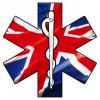Classifieds rule 5 - adverts must have the username and date in photos. Adverts failing rule 5 will be deleted
First Aid
This thread is over three months old. Please be sure that your post is appropriate as it will revive this otherwise old (and possibly forgotten) topic.



Recommended Posts
Create an account or sign in to comment
You need to be a member in order to leave a comment
Create an account
Sign up for a new account in our community. It's easy!
Register a new accountSign in
Already have an account? Sign in here.
Sign In Now